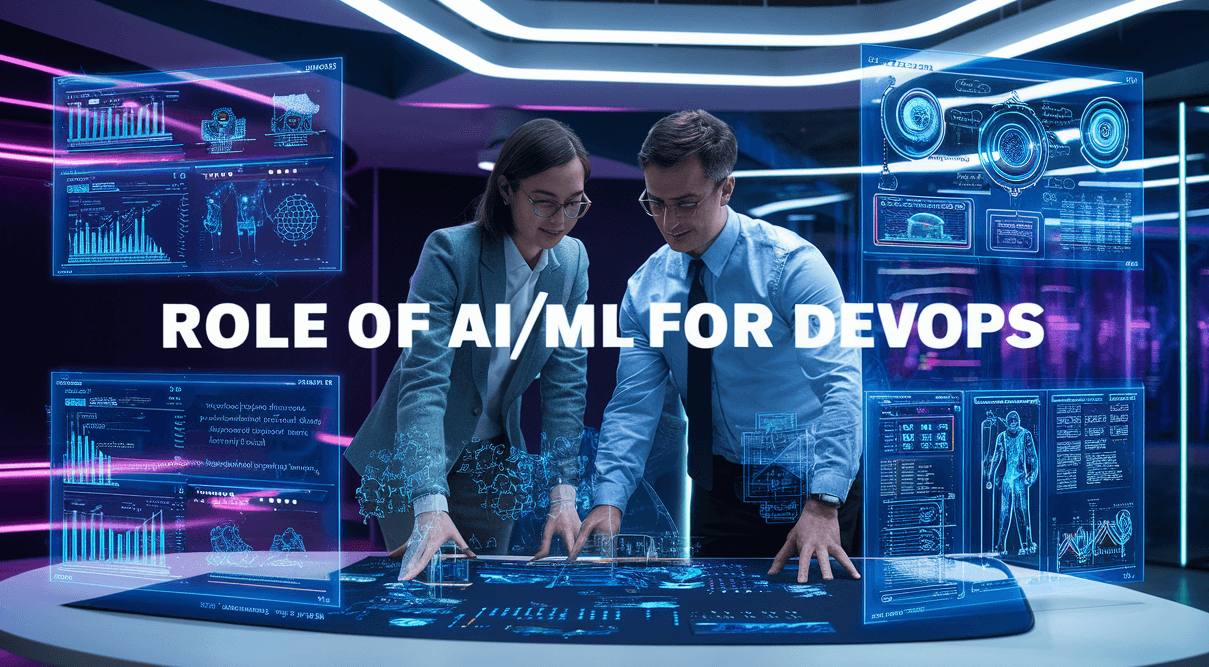Generative AI (Gen AI) is a revolutionary technology that can generate new data and information that is as original as anything written, drawn, or typed by a human. In the field of Data Science and Business Intelligence, Gen AI is said to bring novel solutions to the problems of working with data. While Business Analysts have important organizational roles that translate business requirements into capabilities, It is one of the essential entities of Business Analysis, which helps in transforming the business data into insights for decision-making.
This information is aimed at shedding light on the major distinctions and similarities between Gen AI and Business Analysts in light of Data Analytics. We will explore their responsibilities, competencies, and ways of collaborating to foster a culture of analytics and evidence-based decision-making. When properly utilized, both Gen AI and Business Analysts bring out the best in themselves to deliver solutions in the organizations’ quest to achieve their strategic goals.

Jump ahead to
GenAI in Data Analytics: Creating Automation and Preparing Analysis
Automating the Cleanup and Preprocessing of Numerical Data
Error Identification and Correction
Gen AI can significantly enhance data quality by performing data cleaning tasks. It can effectively detect and eliminate errors, inconsistencies, and missing values, resulting in more accurate and reliable datasets.
Feature Engineering and Normalization
Gen AI’s capabilities extend beyond data cleaning to include feature engineering and normalization. By automatically deriving new features from existing ones and standardizing data within a specific range, Gen AI can streamline the data preparation process and reduce the workload of data analysts.
Generating New Insights From Data
Pattern and Trend Identification
Gen AI can excel in identifying intricate patterns and trends hidden within vast datasets that would be challenging for humans to discern. By analyzing numerous records, it can uncover underlying structures, relationships, or anomalies that might escape human notice. This capability is particularly valuable in fields like financial analysis, where identifying subtle market fluctuations or emerging trends can provide a significant competitive advantage.
Anomaly Detection
Leveraging the power of Gen AI, analysts can effectively detect outliers and anomalous data points that could signal unusual events, fraudulent activities, or quality issues. By establishing baseline patterns and behaviors, Gen AI can identify deviations that warrant further investigation. This enables businesses to proactively address potential risks and ensure the integrity of their operations.
Causal Relationship Discovery
Gen AI can go beyond mere correlation and delve into the complex interplay of variables to establish causal relationships. By analyzing data from various perspectives and considering factors like temporal relationships and counterfactual scenarios, Gen AI can uncover the underlying causes behind observed outcomes. Moreover, this capability is crucial for understanding the impact of interventions, making informed decisions, and optimizing processes.
3 Major Challenges That Gen AI Faces
Bias Mitigation
One of the primary concerns with Generative AI (Gen AI) is the potential for bias to be introduced through the training data or the model itself. This can lead to unfair or discriminatory outcomes. To address this, researchers and developers are working on techniques to identify and mitigate biases in both the data and the models.
Human Oversight
Despite the capabilities of Gen AI, human oversight remains crucial. While Gen AI can automate many processes, human experts are needed to interpret results, verify the accuracy of analyses, and make informed decisions. This ensures that the technology is used responsibly and ethically.
Ethical Considerations
The use of Gen AI in data analysis raises important ethical concerns, including privacy, security, and the potential for misuse. For example, there is a risk of sensitive data being exposed or misused. Therefore, it is essential to implement robust measures to protect privacy and ensure that Gen AI is used ethically and responsibly.
Gen AI for Business Analysts: Developing Strategic Directions
Generating Market Insights
Customer Needs and Preferences
Leveraging vast customer data, Gen AI can identify emerging trends, preferences, and unmet needs within the market. This invaluable information enables businesses to tailor their products and services to resonate more effectively with their target audience, fostering stronger customer relationships and driving increased sales.
Competitive Analysis
Gen AI’s ability to analyze market data, competitor strategies, and industry trends empowers businesses to stay ahead of the curve. Therefore, by gaining insights into competitive landscapes, companies can identify opportunities to differentiate themselves, optimize their offerings, and develop effective growth strategies.
Developing Business Strategies
Opportunity Identification
Generative AI can revolutionize the way businesses discover new growth avenues. By analyzing vast datasets, it can identify emerging markets, untapped customer segments, and innovative product or service directions. This empowers companies to make data-driven decisions and capitalize on potential opportunities before their competitors.
Risk Assessment
In today’s complex business landscape, understanding and mitigating risks is crucial for long-term success. Generative AI can play a pivotal role in risk assessment. By analyzing economic indicators, regulatory changes, and competitive threats, it can help businesses evaluate potential risks and develop effective strategies to mitigate them. Additionally, this proactive approach can enhance resilience and protect businesses from unforeseen challenges.
Challenges to Businesses Due To Generative AI
Overreliance on Technology
While Gen AI offers a powerful tool for analyzing ideas, it’s essential to avoid becoming overly reliant on technology. Human judgment and intuition remain crucial in interpreting and applying the generated insights. Over-mechanization can lead to a loss of nuance and creativity.
Domain Expertise
To effectively utilize Gen AI in business analysis, users must possess a strong understanding of the industry and specific domain knowledge. Without this expertise, there is a risk of misinterpreting results and making suboptimal decisions. Additionally, domain knowledge provides the context necessary to evaluate the relevance and accuracy of AI-generated insights.
Key Differences: Job Description for Data Analysts vs. Business Analysts
Role Definitions
Data Analysts: Concise on the manipulation of data, right from data collection, data editing, data pre-processing, and data analysis. They employ statistical analysis and any graphical representation of data to arrive at certain conclusions.
Business Analysts: Ensure that what is done in the shop looks at the data in light of the big picture business strategy. They make decisions based on analytical outcomes and employ them to add value within organizations. It is often done in collaboration with the management to have a better understanding of the business goals and to deliver recommendations based on analysis.
Impact of Gen AI
Data Analysts: Gen AI is definitely useful in data cleaning and preparation, as these are repetitive tasks that could be handled by Gen AI so that the data analysts can focus more on the analysis. Also, Gen AI can assist data analysts in identifying hidden patterns even without the use of canned reports and other techniques that are practiced in the contemporary world.
Business Analysts: Gen AI can improve the capacity of business analysts in terms of the formulation of effective business intelligence solutions. Operations such as data analysis and reports can be automated, which will assist the business analysts in thinking and working at the strategic level.
Collaboration and Value Creation
Synergy
In order to optimize the value of Gen AI, it is crucial to find a synergy between data analysts and business analysts. Data analysts can feed data into Gen AI with algorithm parameters and draw insights from what has been generated, while business analysts can interpret these insights and explain the C-level value to be derived therefrom.
Effective Communication
Data analysts and business analysts must work hand in hand so as to be in a position to deliver solutions that are in line with the business objectives. It is crucial for a relationship where the primary aim is to have cooperation with clear and understandable objectives and goals.
Shared Goals
In this way, data analysts and business analysts can create synergy and collectively use Gen AI in order to pursue innovative strategies and generate value for the organization with a view to achieving sustainable competitive advantages, which would deliver better decisions.
Conclusion
Therefore, overall, Generative AI can change the way Gen AI In Data Analysts and Gen AI In Business Analysts work greatly. There is a notable distinction in the utility of Gen AI, but all of it can help with the automation of tasks, the generation of new information, and providing the basis for strategic decision-making. When organizations comprehend the major distinctions between these positions and harness Gen AI properly, they are capable of getting an edge on their rivals and harnessing the potential of the data fully.
As the world evolves in the age of big data, it cannot be argued that more research should be conducted about Gen AI and its applicability to data analysis and business intelligence. Only by supporting learning and experimentation can organizations obtain numerous benefits from Gen-AI to support their business goals and transformation.
FAQs
What are essential skills and knowledge required for a career in Gen AI Data Analytics and Business Analytics?
- Technical skills
- Business skills
- Soft skills
What are potential career paths in Gen AI Data Analytics and Business Analytics?
- Data Scientist
- Data Engineer
- Business Analyst
- AI Engineer
- AI Research Scientist
How can I stay updated with rapidly evolving field of Gen AI Data Analytics and Business Analytics?
- Online courses
- Conference and workshops
- Research papers
- Online communities
What are challenges and opportunities in field of Gen AI Data Analytics and Business Analytics?
Challenges:
- Ethical concerns
- Data privacy
- Model interpretability
- Technical complexities
Opportunities:
- Increased demand for AI professionals
- Automation of tasks
- Potential for groundbreaking discoveries
How can I prepare for a career interview in Gen AI Data Analytics and Business Analytics?
- Research the company
- Practise technical questions
- Highlight your projects
- Demonstrate soft skills
How can I build a strong portfolio to showcase my skills in Gen AI Data Analytics and Business Analytics?
- Personal projects
- GitHub
- Kaggle
What is future outlook for careers in Gen AI Data Analytics and Business Analytics?
The demand for AI professionals is expected to continue growing as businesses increasingly rely on data-driven decision-making.
How can I effectively collaborate with non-technical stakeholders in a Gen AI project?
- Use clear and concise language
- Visualize data
- Proritize business outcomes
- Seek feedback
What are the key strategies for effectively managing a team of Data Scientists and AI Engineers?
- Foster a collaborative environment
- Provide mentorship and support
- Set clear expectations
- Recognize and reward achievements
How can I prepare myself for the future of Gen AI Data Analytics and Business Analytics?
To prepare for the future of Gen AI, continuously learn, develop interdisciplinary skills, build a strong network, and embrace change.



